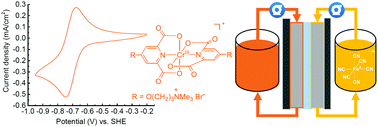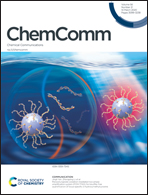Designing Cr complexes for a neutral Fe–Cr redox flow battery†
Abstract
We lay out the design principles of Cr complexes to address issues of slow kinetics and parasitic reactions in the Fe–Cr redox flow battery (ICRFB). We identify theoretically and experimentally dipicolinic acid as a promising ligand, and synthesize its derivative to improve the solubility of the Cr complex to 0.7 M. We couple it with ferrocyanide for a neutral ICRFB delivering 120 stable cycles.



 Please wait while we load your content...
Please wait while we load your content...